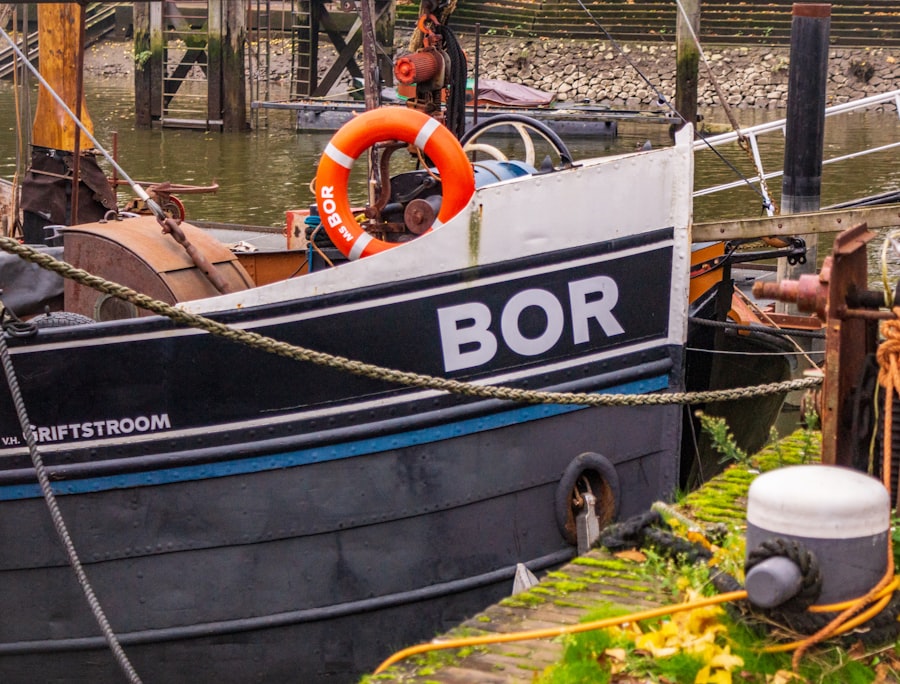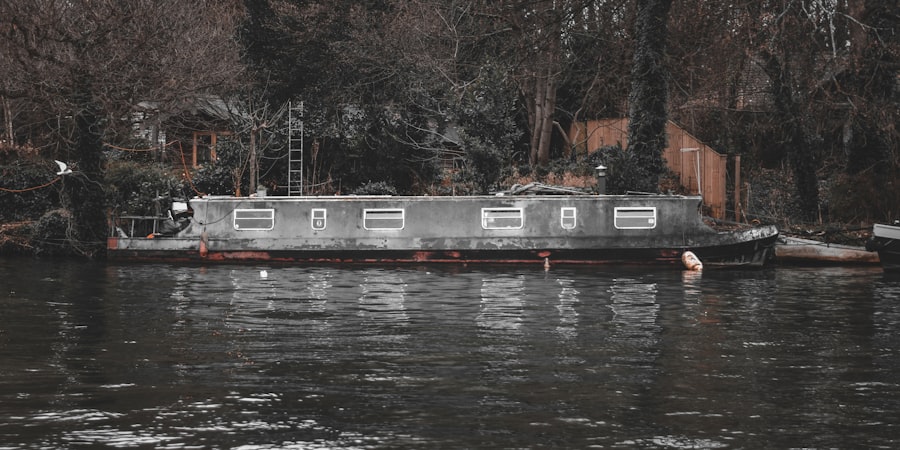Pontoon barges are versatile floating platforms that have gained popularity for various applications, including recreational activities, commercial uses, and even as temporary structures for events. These vessels are characterized by their buoyant design, which typically consists of two or more parallel pontoons that provide stability and support. The flat deck of a pontoon barge allows for easy access and can be customized to accommodate different needs, whether for leisure or work.
Their design makes them particularly suitable for shallow waters, where traditional boats may struggle to navigate. The construction of pontoon barges often involves materials such as aluminum, steel, or fiberglass, each offering distinct advantages. Aluminum is lightweight and resistant to corrosion, making it an excellent choice for those who prioritize durability and ease of handling.
Steel, while heavier, provides strength and can support larger loads, making it ideal for commercial applications. Fiberglass offers a balance between weight and durability, often used in recreational models. Understanding these materials is crucial for potential buyers, as it influences the barge’s longevity, maintenance requirements, and overall performance.
Key Takeaways
- Understand the basic structure and uses of pontoon barges before purchasing.
- Evaluate key factors like size, condition, and intended use when buying a used pontoon barge.
- Inspect the barge thoroughly for damage and maintenance history to avoid costly repairs.
- Explore various sources such as dealers, online listings, and auctions to find used pontoon barges.
- Consider financing options and negotiate effectively to get the best deal on your purchase.
Factors to Consider When Buying a Used Pontoon Barge
When considering the purchase of a used pontoon barge, several factors come into play that can significantly impact your decision. First and foremost is the intended use of the barge. Are you looking for a vessel primarily for leisure activities such as fishing or entertaining guests?
Or do you need a barge for commercial purposes like transporting goods or serving as a floating workspace? The intended use will dictate the size, load capacity, and features you should prioritize in your search. Another critical factor is the condition of the barge.
Used pontoon barges can vary widely in terms of wear and tear, so it’s essential to assess their structural integrity. Look for signs of damage such as rust on metal components, cracks in fiberglass, or leaks in the pontoons. Additionally, consider the age of the barge; older models may require more maintenance and repairs.
Understanding the history of the barge, including previous ownership and usage patterns, can provide valuable insights into its current condition and future reliability.
Where to Find Used Pontoon Barges for Sale

Finding a used pontoon barge requires a strategic approach to ensure you locate a vessel that meets your needs and budget. One of the most common avenues is online marketplaces dedicated to marine sales. Websites such as Boat Trader, Craigslist, and eBay offer extensive listings of used pontoon barges from private sellers and dealers alike.
These platforms allow you to filter searches based on location, price range, and specific features, making it easier to find a suitable option. In addition to online resources, local boat shows and marine expos can be excellent venues for discovering used pontoon barges. These events often feature a variety of vendors showcasing their inventory, providing an opportunity to inspect multiple barges in one location.
Networking with local boating communities or joining forums can also yield leads on available barges that may not be listed online. Engaging with fellow enthusiasts can provide insights into reputable sellers and help you navigate the purchasing process more effectively.
Inspecting a Used Pontoon Barge
| Inspection Area | Key Metrics | Acceptable Condition | Notes |
|---|---|---|---|
| Hull Integrity | Corrosion Level, Dents, Cracks | No major corrosion, no structural cracks | Check pontoons for rust and leaks |
| Deck Condition | Wood Rot, Warping, Fasteners | Minimal rot, secure fasteners | Inspect for soft spots and loose boards |
| Buoyancy | Water Ingress, Foam Condition | No water inside pontoons, foam intact | Ensure pontoons are sealed and buoyant |
| Engine & Controls | Engine Hours, Functionality, Leaks | Runs smoothly, no leaks, reasonable hours | Test throttle, steering, and engine start |
| Electrical System | Battery Condition, Wiring, Lights | All lights functional, wiring intact | Check for corrosion and secure connections |
| Safety Equipment | Life Jackets, Fire Extinguisher, Horn | All required equipment present and functional | Verify expiration dates and condition |
| Trailer Condition | Tires, Bearings, Frame | Tires inflated, bearings greased, no rust | Inspect for roadworthiness if included |
Once you’ve identified potential used pontoon barges for purchase, conducting a thorough inspection is paramount to ensure you’re making a sound investment. Start by examining the pontoons themselves; they should be free from significant dents or corrosion. A simple test involves tapping the pontoons with a mallet; a solid sound indicates good integrity, while a dull thud may suggest internal damage or water intrusion.
Next, inspect the deck and any additional features such as railings, seating, and storage compartments. Look for signs of rot or decay in wooden components and check that all hardware is secure and functional. If the barge has an engine or other mechanical systems, ensure they are in working order by requesting maintenance records or having a marine mechanic conduct an evaluation.
This step is crucial as repairs on engines can be costly and time-consuming.
Maintenance and Repairs for Used Pontoon Barges
Owning a used pontoon barge comes with its share of maintenance responsibilities that are essential for ensuring longevity and optimal performance. Regular cleaning is vital; algae and debris can accumulate on the pontoons and deck, leading to deterioration over time. Using a pressure washer can effectively remove buildup without damaging surfaces.
Additionally, applying protective coatings to metal components can help prevent rust and corrosion. Repairs may also be necessary from time to time, especially if the barge has seen significant use prior to your purchase. Common issues include leaks in the pontoons or wear on the deck surface.
For minor repairs, DIY solutions may suffice; however, more complex issues should be addressed by professionals to avoid compromising safety or functionality. Keeping an organized maintenance schedule that includes inspections before and after each use can help catch potential problems early.
Negotiating the Purchase of a Used Pontoon Barge

Negotiating the price of a used pontoon barge can be a delicate process that requires preparation and strategy. Start by researching comparable models in your area to establish a baseline price range. This information will empower you during negotiations, allowing you to make informed offers based on market value rather than emotional attachment to the vessel.
When engaging with the seller, approach negotiations with respect and transparency. If you identify any issues during your inspection, use these points as leverage to negotiate a lower price. Sellers may be more willing to accommodate if they understand that you are aware of potential repairs needed.
Additionally, be prepared to walk away if the terms do not meet your expectations; this tactic often encourages sellers to reconsider their asking price.
Financing Options for Buying a Used Pontoon Barge
Financing a used pontoon barge can open up opportunities for buyers who may not have the full purchase amount available upfront. Traditional bank loans are one option; many financial institutions offer specialized loans for marine purchases that come with competitive interest rates and flexible repayment terms. It’s advisable to shop around and compare offers from different lenders to find the best deal.
Another financing avenue is through marine dealerships that often provide in-house financing options. These dealers may have established relationships with lenders that can facilitate quicker approvals and tailored financing solutions based on your credit profile. Additionally, consider exploring personal loans or credit unions that may offer favorable terms for borrowers looking to finance smaller amounts.
Enjoying Your Used Pontoon Barge: Tips for a Great Experience
Once you’ve successfully purchased your used pontoon barge, it’s time to enjoy all that it has to offer. Planning outings with family and friends can create lasting memories on the water. Consider organizing fishing trips, sunset cruises, or even hosting small gatherings on board.
The spacious deck of a pontoon barge provides ample room for activities and relaxation alike. Safety should always be a priority while enjoying your barge. Ensure that you have all necessary safety equipment on board, including life jackets, fire extinguishers, and first aid kits.
Familiarize yourself with local boating regulations and navigational rules to ensure compliance while out on the water. By prioritizing safety and planning enjoyable activities, you can maximize your experience with your new pontoon barge while creating unforgettable moments on the water.


